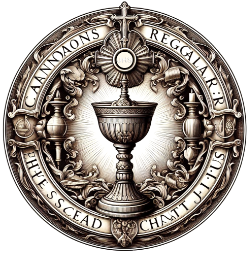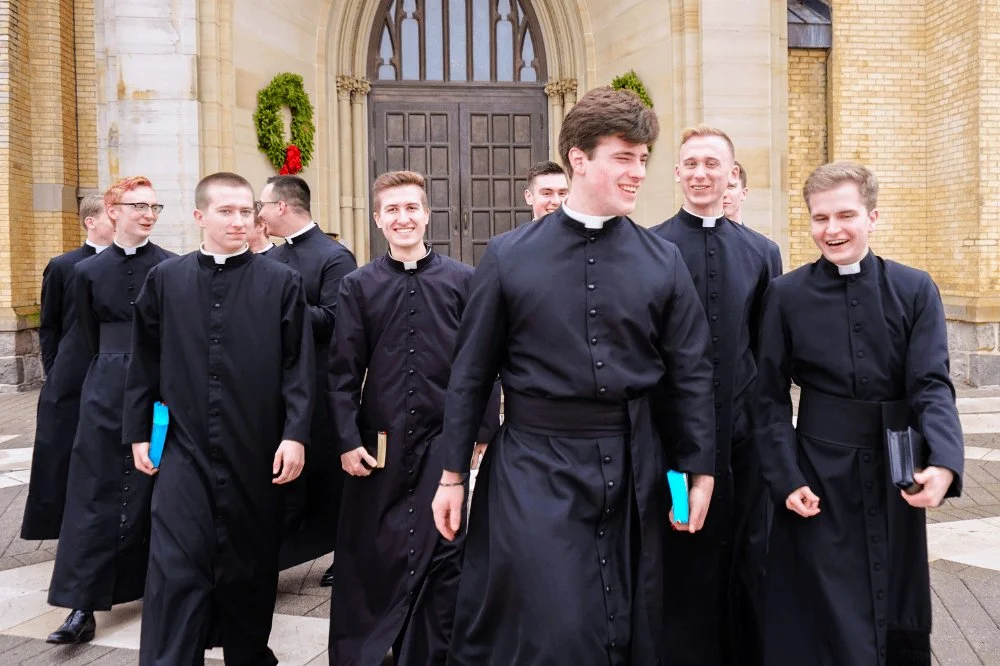Vocations and Discernment: A Catholic and Ecumenical Tapestry of Calling
The word vocation comes from the Latin vocare, meaning “to call.” In the Christian tradition, a vocation is not merely a career or lifestyle choice—it is a divine summons, a personal invitation from God to live in a particular way for the sake of love. Within the Catholic Churches of all denominations, this call is understood as both universal and particular: all are called to holiness, and each is called to a unique path of discipleship. While Roman Catholicism has developed a rich theology of vocations and discernment, this vision is shared—albeit with diverse emphases—across the Eastern Catholic Churches and even among other Christian communities. Together, they form a symphony of callings, each voice contributing to the harmony of God’s redemptive plan.
I. The Universal Call to Holiness
The Second Vatican Council’s Lumen Gentium affirmed that “all the faithful of Christ of whatever rank or status are called to the fullness of the Christian life and to the perfection of charity” (LG 40). This universal call to holiness is the foundation of all vocations. Whether one is a monk or a mother, a bishop or a baker, the first vocation is to become a saint.
This insight is not unique to Roman Catholicism. The Eastern Catholic and Orthodox Churches speak of theosis—divinization—as the goal of Christian life. In Protestant traditions, the priesthood of all believers emphasises that every Christian is called to serve God in their daily life. Thus, discernment begins not with choosing a role, but with listening to the voice of God who calls each person to communion with Him.
II. Particular Vocations: Diverse Paths, One Spirit
Within the Catholic tradition, particular vocations are typically discerned as:
Marriage: A sacramental covenant of mutual self-gift, open to life and rooted in Christ’s love for the Church.
Ordained Ministry: Bishops, priests, and deacons who serve the many Catholic Churches through Word, Sacrament, and pastoral care.
Non-Celibate Ordained Ministry: Bishops, priests, and deacons who serve the many Catholic Churches through Word, Sacrament, and pastoral care, but follow different rules regarding celibacy, for example.
Consecrated Life: Religious brothers and sisters, monks and nuns, who live the evangelical counsels of poverty, chastity, and obedience.
Consecrated Virginity and Secular Institutes: Lay persons who consecrate their lives to God while remaining in the world.
Single Life for the Kingdom: A less formally recognised but deeply meaningful path of celibate witness and service.
In the Eastern Catholic Churches, vocations are similarly diverse but shaped by distinct liturgical and spiritual traditions. For example, married priesthood is normative in many Eastern rites, reflecting a different ecclesial discipline that nonetheless affirms the sanctity of both celibacy and marriage.
Among Anglican, Lutheran, Reformed Catholic, Liberal Catholic and Old Catholic communities, the concept of vocation often includes secular professions—teaching, medicine, craftsmanship—as sacred callings. This broader understanding enriches Catholic reflection, reminding us that God’s call permeates every sphere of life. This is very much the case with the Canons Regular of the Sacred Heart of Jesus, our UK & Northern Ireland Province of the Church of the United Temple of the Spirit.
III. The Art of Discernment
Discernment is the spiritual process of discovering one’s vocation. It is not a puzzle to be solved but a relationship to be deepened. In Catholic spirituality, discernment involves prayer, reflection, spiritual direction, and attentiveness to the movements of the Holy Spirit.
St. Ignatius of Loyola developed a profound method of discernment, emphasising interior freedom, consolation and desolation, and the alignment of one’s desires with God’s will. His Spiritual Exercises remain a cornerstone of vocational discernment across Christian traditions.
Eastern Christian spirituality, with its emphasis on stillness (hesychia), the Jesus Prayer, and the guidance of a spiritual elder (starets), offers a complementary path of discernment rooted in silence and communion.
In ecumenical dialogue, discernment is increasingly seen as a communal process. The Quaker tradition, for instance, emphasises corporate discernment through prayerful silence and consensus. This challenges more individualistic models and invites all Churches in the One Church of Christ to rediscover discernment as an ecclesial act.
IV. Signs of a Vocation
While each vocation is unique, certain signs often accompany authentic discernment:
Peace and Joy: A deep sense of rightness, even amid sacrifice.
Fruitfulness: The vocation bears spiritual fruit in one’s life and in others.
Confirmation: The Churches, through spiritual directors or communities, affirm the call.
Desire: A growing attraction to the life, not as an escape but as a gift.
Importantly, discernment is not about eliminating all doubt but about trusting God’s fidelity. As Pope Benedict XVI once said, “Do not be afraid of Christ! He takes nothing away, and he gives you everything.”
V. Challenges in Discernment Today
Modern culture presents unique challenges to vocational discernment:
Noise and Distraction: The constant stimulation of digital life can drown out the still, small voice of God.
Fear of Commitment: A culture of options can make lifelong vows seem daunting.
Secularism: The sacredness of vocation is often obscured by utilitarian views of success.
In response, all churches must foster a culture of vocation—where discernment is normalised, supported, and celebrated. This includes:
Retreats and spiritual direction
Witness from those living their vocations joyfully
Catechesis on the beauty of each path
Liturgical and communal prayer that opens hearts to God’s call
VI. Ecumenical Resonances
While differences remain in how vocations are understood and lived across Christian traditions, there is a growing ecumenical appreciation for the shared call to holiness and service. Joint initiatives in spiritual direction, youth ministry, and theological education have fostered mutual enrichment.
For example, Taizé—a monastic community with Catholic and Protestant members—embodies a vocation to unity and prayer. Its witness reminds the Churches that vocation is not only about roles but about relationships: with God, with others, and with the world.
Moreover, the ecumenical emphasis on baptism as the foundational call to discipleship invites all Christians to see their lives as a response to grace. Whether one is a Catholic religious, an Anglican deacon, or a Methodist lay preacher, the essence of vocation is the same: to follow Christ in love.
Conclusion: A Symphony of Callings
Catholic vocations and discernment, when viewed through a broader lens, reveal a rich and resonant tapestry of divine calling. Rooted in the universal call to holiness, expressed in diverse paths of life, and discerned through prayerful listening, vocation is ultimately about love—God’s love for us, and our loving response.
In a fragmented world, the witness of those who live their vocations with joy and fidelity is a powerful sign of hope. Whether in the cloister or the classroom, the sanctuary or the street, each vocation is a thread in the great tapestry of salvation history.
And so the Churches, East and West, Catholic and ecumenical, continue to echo the voice of the Lord who calls: “Come, follow me.”
Catholic vocations and discernment, when viewed through a broader lens, reveal a rich and resonant tapestry of divine calling. Rooted in the universal call to holiness, expressed in diverse paths of life, and discerned through prayerful listening, vocation is ultimately about love—God’s love for us, and our loving response.
In a fragmented world, the witness of those who live their vocations with joy and fidelity is a powerful sign of hope. Whether in the cloister or the classroom, the sanctuary or the street, each vocation is a thread in the great tapestry of salvation history.
And so the Churches, East and West, Catholic and ecumenical, continue to echo the voice of the Lord who calls: “Come, follow me.”


